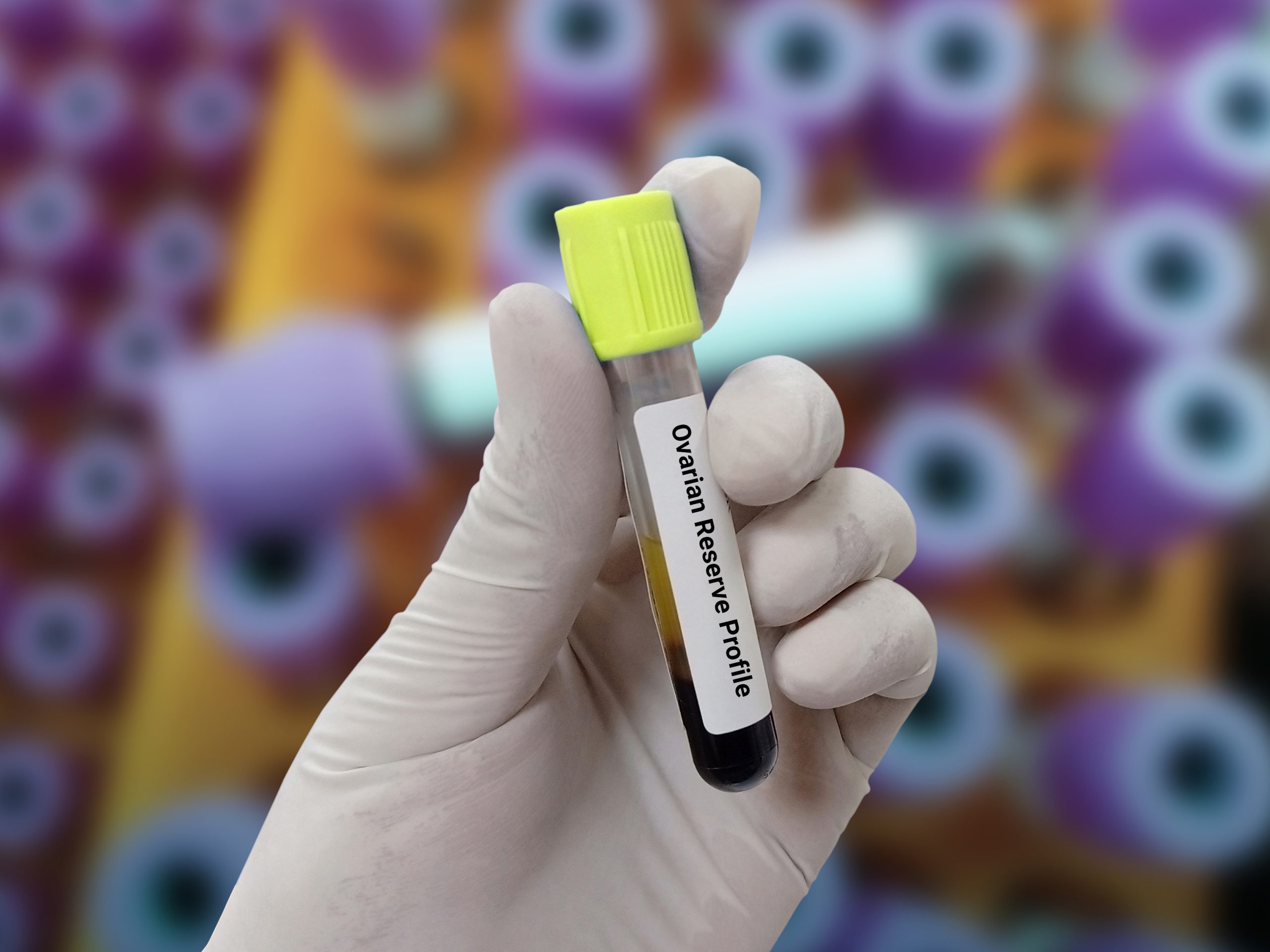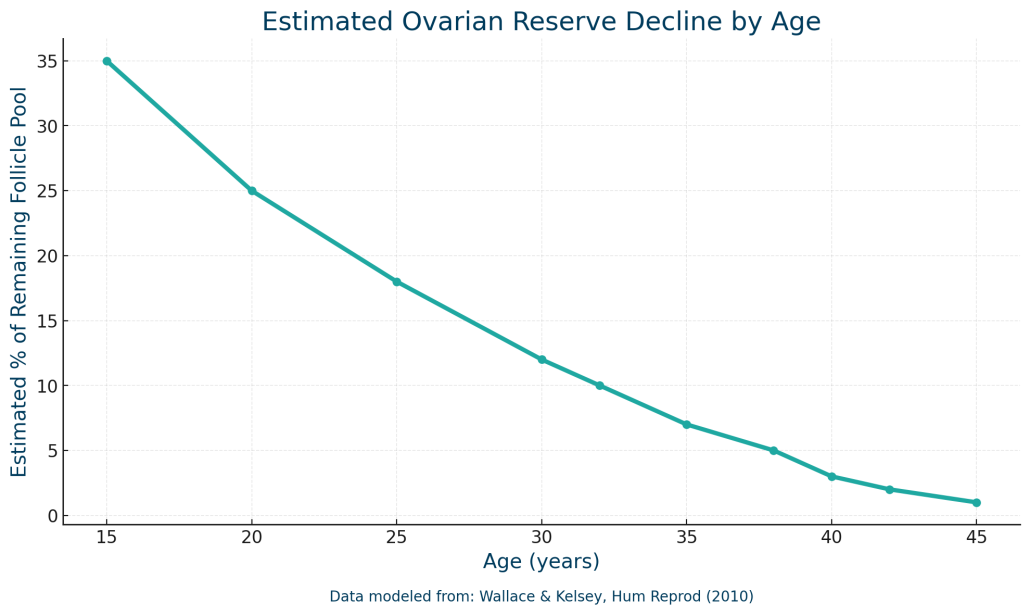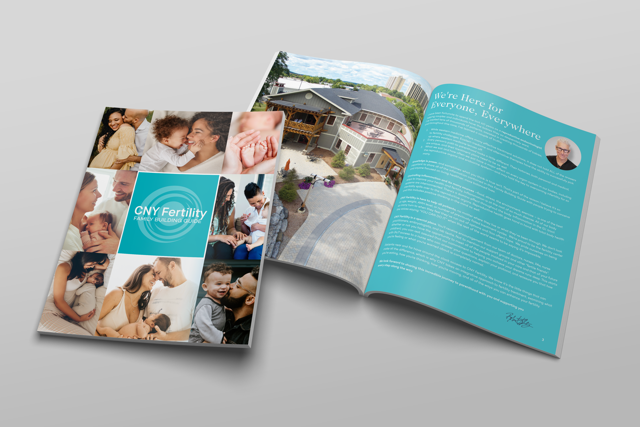Diminished Ovarian Reserve: Symptoms, Causes, and How It Affects Fertility

Diminished ovarian reserve (DOR) is a common fertility diagnosis, especially for women in their 30s and 40s, though it can occur earlier. Understanding what diminished ovarian reserve means, what causes it, and how it affects fertility can help you make an informed plan of action.
At CNY Fertility, we support many individuals with diminished or diminishing ovarian reserve through individualized and affordable care. This guide explains the symptoms, causes, testing, and treatment options.
What Is Diminished Ovarian Reserve?
Diminished ovarian reserve means that the ovaries contain fewer eggs than expected for your age, and that egg quality may also be reduced.
Ovarian aging is a natural process characterized by the loss of both the number and quality of oocytes, and this decline accelerates around the mid-30s.
Women are born with a finite pool of follicles—tiny, fluid-filled sacs inside the ovaries —and each sac contains an immature egg (oocyte). The number of these follicles declines continuously over time and is not renewable.
DOR is usually assessed with a combination of ovarian reserve tests, including:
Antral Follicle Count (AFC) by ultrasound
Follicle-Stimulating Hormone (FSH) (often a day-3 test)
These tests are most useful for predicting ovarian response to stimulation medications, but not for determining the ability to naturally conceive in the general population.
Specifically, AFC has been shown to be a strong predictor of ovarian response to stimulation and of poor ovarian response in in vitro fertilization (IVF) cycles.
Diminished Ovarian Reserve Symptoms
Many people with diminished ovarian reserve feel completely healthy and only discover DOR after having trouble conceiving or during fertility testing. Common signs and findings include:
- Shorter or lighter menstrual cycles
- Low AMH for age
- Higher early-cycle FSH and/or estradiol
- Fewer antral follicles on ultrasound
- Reduced response to fertility medications (fewer follicles/eggs than expected)
- Difficulty conceiving after 6–12 months
Clinical reviews emphasize that ovarian reserve decline often occurs silently and is best assessed with hormone tests and ultrasound rather than symptoms alone.
What Causes Diminished Ovarian Reserve?
Diminished ovarian reserve can have multiple contributing factors, and sometimes there is no obvious cause.
Major contributors include age, genetic factors, medical conditions, surgeries, and exposure to certain environmental toxins.
Age
Age is the most important factor for ovarian reserve. Reviews of ovarian aging indicate that both oocyte quantity and quality decline with advancing age, with a more pronounced impact and a clearer inflection point occurring in the mid-30s.

Genetic Factors
Some individuals are born with fewer follicles or experience faster follicle loss due to genetic influences.
Autoimmune and Endocrine Conditions
Autoimmune diseases and endocrine disorders (such as thyroid disease) can affect the ovaries and contribute to earlier or more rapid ovarian aging.
Surgery, Chemotherapy, or Radiation
Ovarian surgery (for cysts, endometriomas, or other indications), chemotherapy, and pelvic radiation can all reduce ovarian reserve.
Environmental Toxins (BPA, Phthalates, Pesticides)
Research suggests exposure to some environmental toxins is associated with lower ovarian reserve:
A study of women undergoing fertility treatment found that higher urinary bisphenol A (BPA) concentrations were associated with lower antral follicle counts, suggesting possible accelerated follicle loss. BPA is found in many disposable plastic containers.
Another human study reported that higher BPA exposure was linked to altered ovarian reserve parameters and reduced AMH.
A cohort exposed to pyrethroid pesticides showed an association between certain pyrethroid metabolites and lower AMH levels, a marker of ovarian reserve.
Though these studies describe associations, not proven cause-and-effect, they support the idea that minimizing avoidable exposure to endocrine-disrupting chemicals can protect your reproductive health.
Endometriosis
Endometriosis, particularly when ovarian endometriomas are present, is strongly linked to decreased ovarian reserve.
A 2024 systematic review found that ovarian endometriomas and their surgical removal are frequently associated with lower AMH levels, reflecting reduced ovarian reserve.
A 2024 meta-analysis of laparoscopic cystectomy for endometriomas also showed a decline in AMH after surgery, confirming that cyst removal can further reduce ovarian reserve.
Because of this, decisions about endometrioma surgery are often individualized, balancing pain, risk of malignancy, and fertility preservation.
Can Diminished Ovarian Reserve Be Reversed?
Currently, diminished ovarian reserve cannot be reversed. The scientific consensus is that people are born with a finite, non-renewing number of oocytes and that this number declines over time.
However, several strategies may help optimize egg quality and ovarian response, even if egg quantity cannot be increased.
Evidence-Based Supplements and Lifestyle Support
CoQ10
A randomized controlled trial of young women with poor ovarian reserve found that those who were pretreated with Coenzyme Q10 (CoQ10) before IVF had:
- More retrieved oocytes
- More mature (MII) oocytes
- More high-quality embryos
These findings suggest that CoQ10 improves ovarian response and embryological outcomes (though effects on live birth were not fully established).
Vitamin D
A 2018 meta-analysis of women undergoing assisted reproductive treatment found that women who were vitamin D replete had higher live birth rates than those who were deficient or insufficient.
Omega-3 Fatty Acids (Emerging Data)
An animal study found that increasing the omega-3 to omega-6 fatty acid ratio in the body led to higher counts of primordial and primary follicles, suggesting a potential protective effect on ovarian reserve.
Data from human research is emerging but limited, and supports a general focus on anti-inflammatory dietary patterns.
Experimental Approaches: PRP “Ovarian Rejuvenation”
Intra-ovarian platelet-rich plasma (PRP) is being investigated as a way to improve ovarian function in women with reduced ovarian reserve or poor ovarian response.
A 2020 systematic review found that intra-ovarian PRP was associated with improvements in some ovarian reserve markers (such as AMH and AFC) and encouraging IVF outcomes in early reports. But the authors emphasized that the evidence was limited.
A 2024 systematic review and meta-analysis likewise concluded that PRP may improve ovarian reserve markers and response in women with low reserve, but the data are still insufficient to base firm recommendations on.
In short, PRP is promising but experimental, and patients should be counseled about the uncertainties.
Can You Get Pregnant With Diminished Ovarian Reserve?
Yes. Many people with diminished ovarian reserve conceive, either naturally or with fertility treatment. Though success rates with DOR are generally lower on average.
A 2017 study of women with DOR undergoing IVF reported a clinical pregnancy rate of 11.5% per cycle and a cycle cancellation rate of 34.4%. Whereas the clinical pregnancy rate for all women is around 23% per initiated cycle. The study highlights both the possibility of pregnancy and the more challenging prognosis. Source
A 2024 study of young women (≤35 years) with DOR found that diminished ovarian reserve significantly lowered clinical pregnancy and live birth rates in fresh IVF/ICSI cycles compared to women without DOR, but success was still achievable.
At the same time, evidence suggests that younger patients with low AMH can still have relatively favorable outcomes when they proceed to retrieval:
A study of IVF results in patients with very low AMH found that relatively young women (under 38) with steep reductions in ovarian reserve could still achieve meaningful pregnancy and live birth rates with IVF, particularly over multiple cycles.
A 2025 study found that at least 45% of DOR patients under 40 achieved a live birth after multiple IVF cycles. Cumulative live birth rates approached 60% for women under 35. Though outcomes declined sharply for those 40 and older.
Treatment Options for Diminished Ovarian Reserve
Depending on age, hormone levels, ultrasound findings, and goals, options may include:
- Timed intercourse or IUI may be effective in younger patients with mild DOR and no other factors)
- Conventional IVF with tailored stimulation protocols
- Mini-IVF or modified-natural IVF for those who produce very few follicles
- Donor egg IVF for those with severe DOR or advanced maternal age
- Supplements and enhancement strategies (CoQ10, vitamin D, experimental PRP, i)
Ovarian reserve tests like AMH and AFC are used by specialists to customize stimulation protocols and counsel patients about expected response and prognosis.
When to Get Tested for Diminished Ovarian Reserve
ASRM guidance suggests fertility evaluation if :
- You are under 35 and have been trying to conceive for 12 months without success
- You are 35 or older and have been trying for 6 months without success
Earlier ovarian reserve testing may be considered if:
- You have endometriosis
- Your cycles are becoming shorter or irregular
- You have a family history of early menopause
- You’ve had ovarian surgery, chemotherapy, or pelvic radiation
- You are considering egg or embryo freezing and want to understand your baseline reserve
Diminished Ovarian Reserve: The Takeaway
A diagnosis of diminished ovarian reserve can feel overwhelming, but it does not mean your fertility journey is over.
Research clearly shows that while DOR is associated with lower average pregnancy and live birth rates, many people with DOR do go on to have children. This is especially true when treatment is individualized and, when appropriate, achieved over multiple cycles.
You cannot restore the original number of eggs, but you can:
- Understand your ovarian reserve numbers in context
- Optimize egg quality and overall health where possible
- Choose treatment strategies that align with your age, diagnosis, and goals
At CNY Fertility, we work with many individuals who have low AMH, low AFC, high FSH, or past poor response to stimulation. Schedule a consultation to learn how our team can help you interpret your results, explore options, and design a plan that balances the science with your personal and financial realities.

